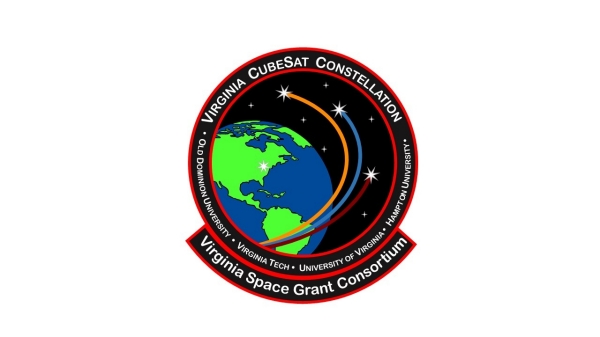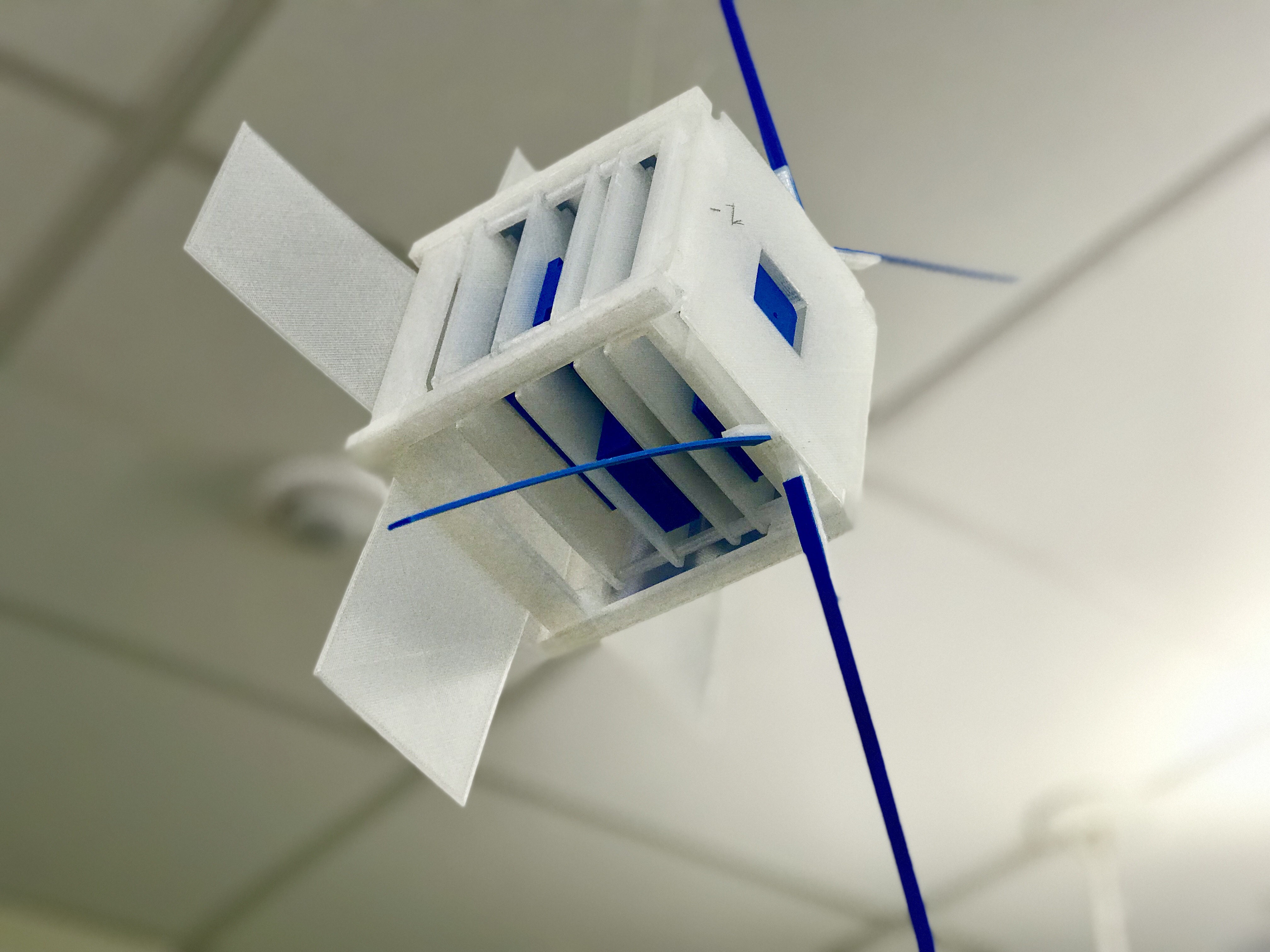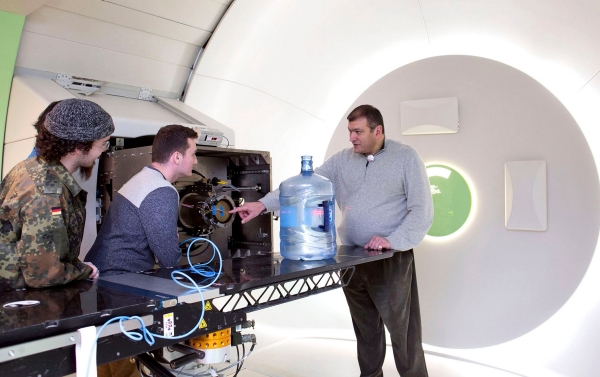International Space Station to Launch ODU CubeSat
December 20, 2017
 The Virginia CubeSat Constellation project is a collaboration between students from Old Dominion University, the University of Virginia, Virginia Tech and Hampton University.
The Virginia CubeSat Constellation project is a collaboration between students from Old Dominion University, the University of Virginia, Virginia Tech and Hampton University.
 The approximately four-inch CubeSat that was built by Old Dominion students will be launched from the International Space Station later this year.
The approximately four-inch CubeSat that was built by Old Dominion students will be launched from the International Space Station later this year.
 Hovakim Nazaryan (right), medical physicist at the Hampton Proton Therapy Institute explains the irradiation set up to James Flynn, ODU junior and student lead of the electrical engineering team participating in the The Virginia CubeSat Constellation project that is sponsored by the Virginia Space Grant Consortium and funded by NASA. Joining Flynn is Tony DeFilippis (Virginia Tech). Note: For this test, the jug of water was used to stop the proton beam.
Hovakim Nazaryan (right), medical physicist at the Hampton Proton Therapy Institute explains the irradiation set up to James Flynn, ODU junior and student lead of the electrical engineering team participating in the The Virginia CubeSat Constellation project that is sponsored by the Virginia Space Grant Consortium and funded by NASA. Joining Flynn is Tony DeFilippis (Virginia Tech). Note: For this test, the jug of water was used to stop the proton beam.
By Jon Cawley
A team of Old Dominion University students are counting down to a launch date later this year when their nano-sized cube satellite will be sent into orbit from the International Space Station.
More than 20 engineering ODU students took part in the two-year Virginia CubeSat Constellation project to develop the 4-by-4 inch satellite that will take measurements documenting the effecs of orbital decay during the approximately four-month flight.
The Virginia CubeSat Constellation is a NASA and Virginia Space Grant Consortium-funded mission that will place three very small satellites in orbit as a constellation from the International Space Station as part of the NASA Undergraduate Student Instrument program. The student-led mission is a VSGC project and joint effort among four member universities: Old Dominion University, the University of Virginia, Virginia Tech and Hampton University. More than 100 students across the universities have been working on the project.
ODU students particpating in the constellation project include: James Flynn, student lead of the electrical engineering team; Kimberly Wright, mechanical team lead; and Susannah Miller, University lead who oversees the project and coordinates with the other universities as well as about 20 additional ODU students from mechanical, electrical and engineering technology.
"It's a tremendous opportunity for our students to build, develop and fly a satellite in a constellation," said Mary Sandy, director of the Virginia Space Grant Consortium. "Of all the missions NASA selected, we were the only project that is a constellation - the others are individual."
The Constellation has been selected for launch to the International Space Station in the third quarter of 2018 or early 2019 with orbital insertion to follow from the station. The ODU satellite, which has a drag brake to intentionally cause orbital decay, is expected to remain in orbit for up to four months. The other two satellites should orbit for up to two years. The satellites will communicate data to ground stations at Virginia Tech, the University of Virginia and Old Dominion University for subsequent analysis using an analytical tool being developed by Hampton University.
Students named their satellites after the Roman goddesses on the back of the Virginia State Seal who represent the blessings of freedom and peace. UVA chose Libertas, the goddess of individual liberties; Virginia Tech selected Ceres, the goddess of agriculture; and Old Dominion University chose Aeternitas, the goddess representing eternity.
For Dimitre Popescu, associate professor, department of electrical and computer engineering, it is his first time working on a satellite.
"The students are very dedicated. This is an area they enjoy working on. It's great to see that whatever they design will end up in space," he said. "This is almost like a full time job. For students to work on a large scale project like this is not an every day opportunity.
Popescu said the project gives the students real working experience that will prepare them for jobs at NASA because they will know first hand what the agency expects.
"The final deadline to deliver the cubes to NASA Wallops is in May," Popescu continued. "We have to deliver on time if we want to catch this opportunity. It's the first time working on something like this for many of us"
The mission seeks to obtain measurements of the orbital decay of a constellation of satellites to develop a database of atmospheric drag and the variability of atmospheric properties. It will also evaluate and demonstrate a system to determine and communicate relative and absolute spacecraft position across an orbiting constellation. The CubeSats take advantage of microminiaturization of sensors and other components to undertake relatively inexpensive studies and demonstrations in space.
Flynn also has never worked on a satellite.
"I love working with software and coding. I never thought I'd get to work on a satellite in college," he said. "This project definitely requires a good amount of practical and theoretical knowledge that go hand in hand. It's great to be part of it.
"A lot of atmospheric data was collected more than 50 years ago," Flynn continued. "Our goal is to improve satellites and their lifespans in space."

